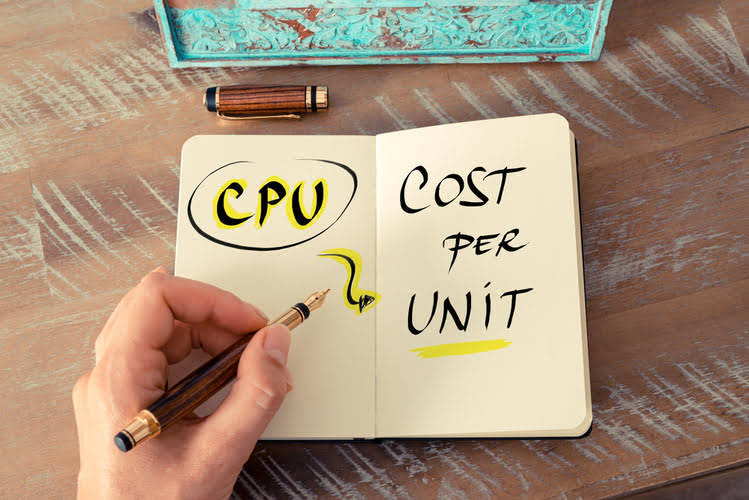Direct labor efficiency variance explanation, formula, example, reasons
If customer orders for a product are not enough to keep the workers busy, the production managers will have to either build up excessive inventories or accept an unfavorable labor efficiency variance. The first option is not in line with just in time (JIT) principle which focuses on minimizing all types of inventories. Excessive inventories, particularly those that are still in process, are considered evil as they generally cause additional storage cost, high defect rates and spoil workers’ efficiency.
Labor efficiency variance, also referred to as labor time variance, constitutes a segment of the broader labor cost variance. This variance emerges from the disparity between the anticipated standard labor hours and the actual hours expended. Its core function lies in quantifying this difference, providing insight into whether a business optimally leverages its labor force.
Direct Labor Variances FAQs
A financial professional will offer guidance based on the information provided and offer a no-obligation call to better understand your situation. Someone on our team will connect you with a financial professional in our network holding the correct designation and expertise. Our mission is to empower readers with the most factual and reliable financial information possible to help them make informed decisions for their individual needs. This team of experts helps Finance Strategists maintain the highest level of accuracy and professionalism possible. At Finance Strategists, we partner with financial experts to ensure the accuracy of our financial content.
What is your current financial priority?
In this question, the company has experienced an unfavorable direct labor efficiency variance of $325 during March because its workers took more hours (1,850) than the hours allowed by standards (1,800) to complete 600 units. It is necessary to analyze direct labor efficiency variance in the context of relevant factors, for example, direct labor rate variance and direct material price variance. It is quite possible that unfavorable direct labor efficiency variance is simply the result of, for example, low quality material being procured or low skilled workers being hired. In case of low quality direct material, the direct material price variance will likely be favorable and in the later case, the direct labor rate variance will probably be favorable; both at the expense of direct labor efficiency variance. Labor rate variance measures the difference between the actual and standard labor rates, highlighting cost fluctuations due to wage variations.
Accounting Ratios
Finance Strategists has an advertising relationship with some of the companies included on this website. We may earn a commission when you click on a link or make a purchase through the links on our site.
When the actual time spends different from the estimation, it will lead to a difference of the actual cost and the standard cost. It can be both favorable (actual cost less than the estimate) or unfavorable, the actual is higher than estimate. The direct labor efficiency variance is one of the main standard costing variances, and results from the difference between the standard quantity and the actual quantity of labor used by a business during production. Additionally the variance is sometimes referred to as the direct labor usage variance or the direct labor quantity variance. Labor efficiency variance is the difference between the time we plan and the actual time spent in production.
For proper financial measurement, the variance is normally expressed in dollars rather than hours. Where,SH are the standard direct labor hours allowed,AH are the actual direct labor hours used, andSR is the standard direct labor rate per hour. If the actual hours surpass the standard hours, the variance is unfavorable, indicating decreased efficiency as more time was spent than expected. Conversely, if the actual hours fall short of the standard, resulting in a negative value, it signifies a favorable variance due to higher efficiency in labor usage.
Analysis
From the payroll records of Boulevard Blanks, we find that line workers (production employees) put in 2,325 hours to make 1,620 bodies, and we see that the total cost of direct labor was $46,500. Based on the time standard of 1.5 hours of labor per body, we expected labor hours to be 2,430 (1,620 bodies x 1.5 hours). Even though the answer is a negative number, the variance is favorable because employees worked more efficiently, saving the organization money. Notice that using the standard labor rate of $18 per hour and assuming 1,620 bodies produced, we would have expected to pay $43,740 for labor, but because our employees were more efficient than expected, we only paid $41,850 (based on standard cost, not actual). What we have done is to isolate the cost savings from our employees working swiftly from the effects of paying them more or less than expected. In Company Zeta’s case, actual labor hours significantly exceeding the standard hours indicate inefficiencies in labor use, leading to additional labor costs.
If the balance is considered insignificant in relation to the size of the business, then it can simply be transferred to the cost of goods sold account. Finance Strategists is a leading financial education organization that connects people with financial professionals, priding itself on providing accurate and reliable financial information to millions of readers each year. Additionally, the dynamic nature of industries, with evolving technologies and practices, swiftly renders established standards obsolete, demanding frequent revisions. External influences, such as market fluctuations or regulatory shifts, further complicate the maintenance of accurate benchmarks. Double Entry Bookkeeping is here to provide you with free online information to help you learn and understand bookkeeping and introductory accounting.
Due to these reasons, managers need to be cautious in using this variance, particularly when the workers’ team is fixed in short run. In such situations, a better idea may be to dispense with direct labor efficiency variance – at least for the sake of workers’ motivation at factory floor. At first glance, the responsibility of any unfavorable direct labor efficiency variance lies with the production supervisors and/or foremen because they are generally the persons in charge of using direct labor force. However, it may also occur due to substandard or low quality direct materials which require more time to handle and process. If direct materials is the cause of adverse variance, then purchase manager should bear the responsibility for his negligence in acquiring the right materials for his factory. This shows that our labor costs are over budget, but that our employees are working faster than we expected.
- A negative value of direct labor efficiency variance means that excess direct labor hours have been used in production, implying that the labor-force has under-performed.
- In order to make a proper estimate, management estimates the standard cost base on the unit of labor and material.
- Excessive inventories, particularly those that are still in process, are considered evil as they generally cause additional storage cost, high defect rates and spoil workers’ efficiency.
- Unraveling the interconnected web of variances across different operational facets and balancing efficiency goals with compliance with labor agreements adds layers of complexity to variance analysis.
In other words, when actual number of hours worked differ from the standard number of hours allowed to manufacture a certain number of units, labor efficiency variance occurs. If workers manufacture a certain number of units in an amount of time that is less than the amount of time allowed by standards for that number of units, the variance is known as favorable direct labor efficiency variance. On the other hand, if workers take an amount of time that is more than the amount of time allowed by standards, the variance is known as unfavorable direct labor efficiency variance. Labor efficiency variance happens when the price per direct labor remains the same but the time spends to produce one unit different from standard costing. Management makes the wrong estimate of the time spent in production or the actual time increase due to various reasons.
When we set the budget too high, it will impact the total cost as well as the selling price. Suppose, for example, a manufacturer sets the standard labor rate at 15.00 per hour, and the standard quantity of labor needed to manufacture one item at 0.50 hours. It occurs when the actual hours worked are more than the standard hours allotted for a specific level of production. In such cases, the negative variance indicates lower efficiency, as more time than expected was needed to complete the work.
On the other hand, LEV gauges the variance arising merger model from differences in actual and standard hours worked, focusing on productivity changes. Essentially, labor rate variance addresses wage-related costs, while labor efficiency variance assesses the impact of productivity variations on labor costs. An unfavorable labor efficiency variance signifies that more labor hours were expended than the predetermined standard for the production achieved. It indicates decreased efficiency, where the actual hours surpass the anticipated ones, potentially leading to higher labor costs and inefficiencies within the production process. The standard cost usually includes variable costs such as direct material and direct labor.
This analysis is vital for assessing and enhancing productivity in various business or manufacturing contexts. The Purple Fly has experienced a favorable direct labor efficiency variance of $219 during the second quarter of operations because its workers were able to finish 1,200 units in fewer hours (3,780) than the hours allowed by standards (3,840). The standard direct labor hours allowed (SH) in the above formula is the product of standard direct labor hours per unit and number of finished units actually produced. In this example, the direct labor efficiency variance is positive (favorable), as the actual amount of labor used (230) was less than the standard amount of labor (250), and therefore it cost the business less to produce the 500 items for than it should have done. Consequently this variance would be posted as a credit to the direct labor efficiency variance account. Additionally full details of the journal entry required to post the variance, standard cost how to prepare a trial balance in 5 steps and actual cost can be found in our direct labor variance journal tutorial.
It is the difference between the actual hours spent and the budgeted hour that the company expects to take to produce a certain level of output. The actual time can be shorter or longer due to various reasons, so it will create a favorable and unfavorable variance. The purpose of calculating the direct labor efficiency variance is to measure the performance of the production department in utilizing the abilities of the workers. A positive value of direct labor efficiency variance is obtained when the standard direct labor hours allowed exceeds the actual direct labor hours used. A negative value of direct labor efficiency variance means that excess direct labor hours have been used in production, implying that the labor-force has under-performed. Direct labor efficiency variance (also called direct labor usage variance) is the difference between the standard cost of standard direct labor hours allowed for actual production, and the standard cost of labor hours actually used in production.







